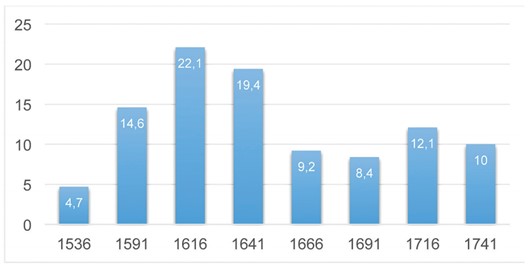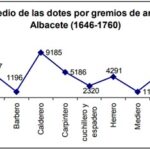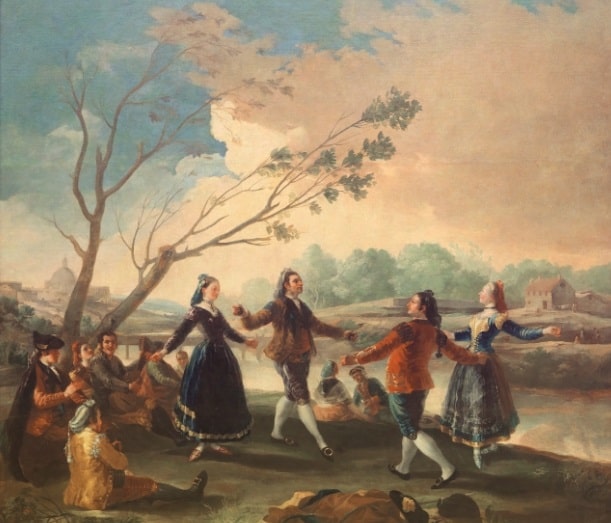
The matrimonial dowry was an amount of movable or immovable property that the woman had to contribute to the marriage. It was a way of transmitting property between families, giving rise to a marriage market that sought consolidation or social advancement. This reproduction strategy was used by lineages and tended towards endogamy between the different social groups. The value of dowries was a reflection of the family’s economic situation: the higher the dowry, the wealthier the family that provided it. Consequently, the study of dowries can determine the material conditions of households according to their economic activity. An example of this is the city of Albacete. Between 1646 and 1760, within the group of artisans, the dowry could vary significantly according to the branch of production carried out. Thus, while the average value of the dowry for espadrille makers was 1,211 reales, that of boilermakers rose to 9,185 reales. Blacksmiths, hairdressers, weavers, riggers and carpenters were in the middle bracket, with figures ranging between 4,000 and 5,000 reais. The coveted trade of coppersmith is a reflection of the fact that the social prestige, material work and economic status of this group meant a good opportunity for a profitable marriage.
Collection: Graphics
Project: 4. Family, daily life and social inequality in Europe., 8. Women and the change for gender equality in Europe.
Chronology: XVII, XVIII
Scope: Secondary Education, Baccalaureate, University
Link: http://www.tiemposmodernos.org/tm3/index.php/tm/article/view/1295/620
Resource type: Graph
Format: Line chart
Source: Hernández López, C. (2016). “Trastillos de casa pobre. Homenaje de casa decente”. Una visión diferenciada de las casas, ajuares y espacios domésticos desde el mundo rural manchego a finales del Antiguo Régimen”, en Tiempos Modernos, vol. 8, nº 32, p. 465.
Language: Spanish
Date: 2016
Owner: Pablo Ballesta Fernández (Modernalia)
Copyright: © Tiempos Modernos: Revista Electrónica de Historia Moderna © Carmen Hernández López
Abstract: Marital dowries in the artisan sector as social differentiation
Image
Tags






